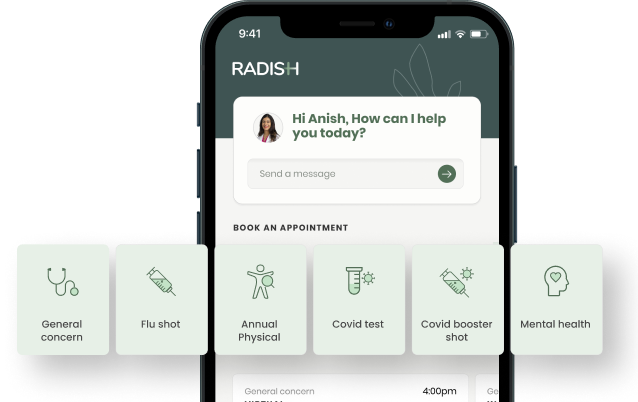Managing Diabetes Through Nutrition

Dr. Jason Sellers
Diabetes and pre-diabetes are common diseases that affect Americans. Learn how to develop a nutritious diet that can help you live a healthier life.

Diabetes is a very prevalent disease within the United States. About 1 in 10 people suffer from diabetes – 5-10% of those have type 1 while the remaining have type 2. Diabetes affects how your body processes sugars and turns them into energy. People with type 1 diabetes usually develop the condition at a young age and are genetically incapable of producing insulin, the hormone that allows our body to turn sugar into energy. Those with type 2 diabetes usually develop this in middle age and have insulin, but their body is less sensitive to it. 1 in 3 people are pre-diabetic, meaning they are at higher risk of developing type 2 diabetes. Whether you have type 1, type 2, or are pre-diabetic, nutrition can greatly change how this disease affects your day-to-day life and outcomes.
Nutrition and Diabetes
If you are diabetic or pre-diabetic, it is important to eat healthy, balanced meals three times a day. Eating balanced meals at regular intervals throughout the day can help your body use insulin more effectively. There are two common methods to help monitor the food you are eating: carb counting and the plate method.
Carb Counting
Carb counting is exactly what it sounds like – paying attention to the amount of carbohydrates that you are putting into your body. Some carbs are better than others; healthy carbs include fruits, vegetables, whole grains, legumes, and low-fat dairy products. Unhealthy carbs include processed foods with added fat, sugar, and sodium.
The Plate Method
This method is a visual way to make sure you are eating the correct amounts of each food group for a balanced diet.
Begin with a standard dinner plate:
- Fill half with non-starchy vegetables, such as salad, green beans, broccoli, cauliflower, cabbage, or carrots.
- Fill one quarter with a lean protein, such as chicken, turkey, beans, tofu, or eggs.
- Fill one quarter with carb foods, such as grains, starchy vegetables (potatoes and peas), rice, pasta, beans, fruit, or yogurt.
Both methods achieve the same goal: eating a healthy, balanced diet that will not lead to high spikes or dips in blood sugar. Neither method means you cannot eat the foods you enjoy – it might just mean eating smaller amounts or eating them less often.
Nutrition and Pre-Diabetes
A healthy diet in a pre-diabetic patient can greatly decrease the chances of developing type 2 diabetes. Using the methods above is a great way to develop a healthy and balanced diet. Other things to pay attention to when cooking your next meal are portion control, fiber intake, and beverage choice. As mentioned before, eating a balanced diet does not mean you have to give up your favorite foods: moderation is key! If you want to eat pizza, try eating 1 slice instead of 2, or in your next meal, substitute a serving of carbs for an additional serving of vegetables. Additionally, eating a fiber-rich meal can help you stay full longer. This will help you avoid eating sugary snacks in between meals. Lastly, choosing water over sugary drinks will improve your health while avoiding blood sugar spikes. Sticking to these healthy eating habits can help pre-diabetic patients from developing type 2 diabetes.
Nutrition and Eating Out
While it can be difficult to get in the habit of eating healthier, something else that can add to the challenge is eating out. Eating at restaurants is a beloved pastime to spend with friends and family to enjoy your favorite foods, but it can be difficult to stick to a healthy diet when you do not have control as to what goes into your meals. One way to make sure you are not overeating when being served restaurants’ huge portions is to drink a glass of water as you are sitting down to your meal. Studies have shown that this leads to eating less food. Another way is to have the server box up half of your meal right away to enjoy the next day. Additionally, trying to choose dishes while keeping the above diet in mind will be most beneficial. If you are going to eat a sugary glazed chicken as your entree, try having vegetables as sides instead of french fries.
Diabetes, Nutrition, and Exercise
While nutrition is important, it is only half of the picture. Exercising regularly not only helps lower blood sugar levels, but improves your overall health. Experts say participating in 30 minutes of moderate exercise 5 days a week has shown to improve health. It is important to remain hydrated and manage your blood sugar to avoid hypoglycemia (low blood sugar) when exercising. Because exercising naturally lowers your blood sugar, if you are diabetic and on insulin you can risk becoming hypoglycemic. If you are looking to start exercising, speak to your Radish provider about how to manage your blood sugar.
Making lifestyle changes to diet and exercise can be difficult. A great way to approach this is working with a nutritionist to help implement changes to your diet. Living with diabetes is not easy, but working on a healthier diet can lead to improvement in your overall health. If you are ready to take the first steps in changing your diet, or if you want advice on how to continue your healthy diet, book an appointment with a nutritionist today.
Request a Free Demo
Learn how Radish Health can help you improve employee health and save on healthcare.
Request a Demo